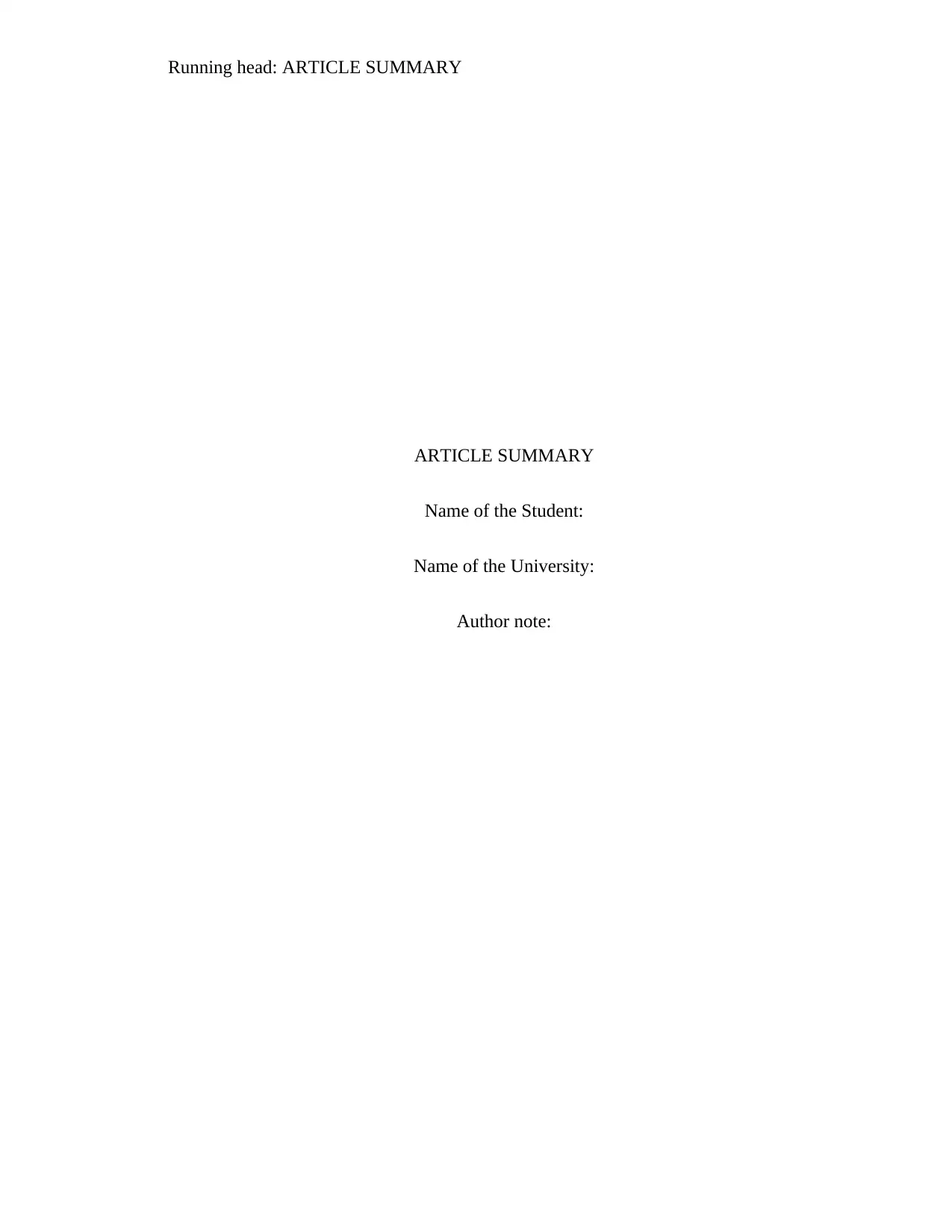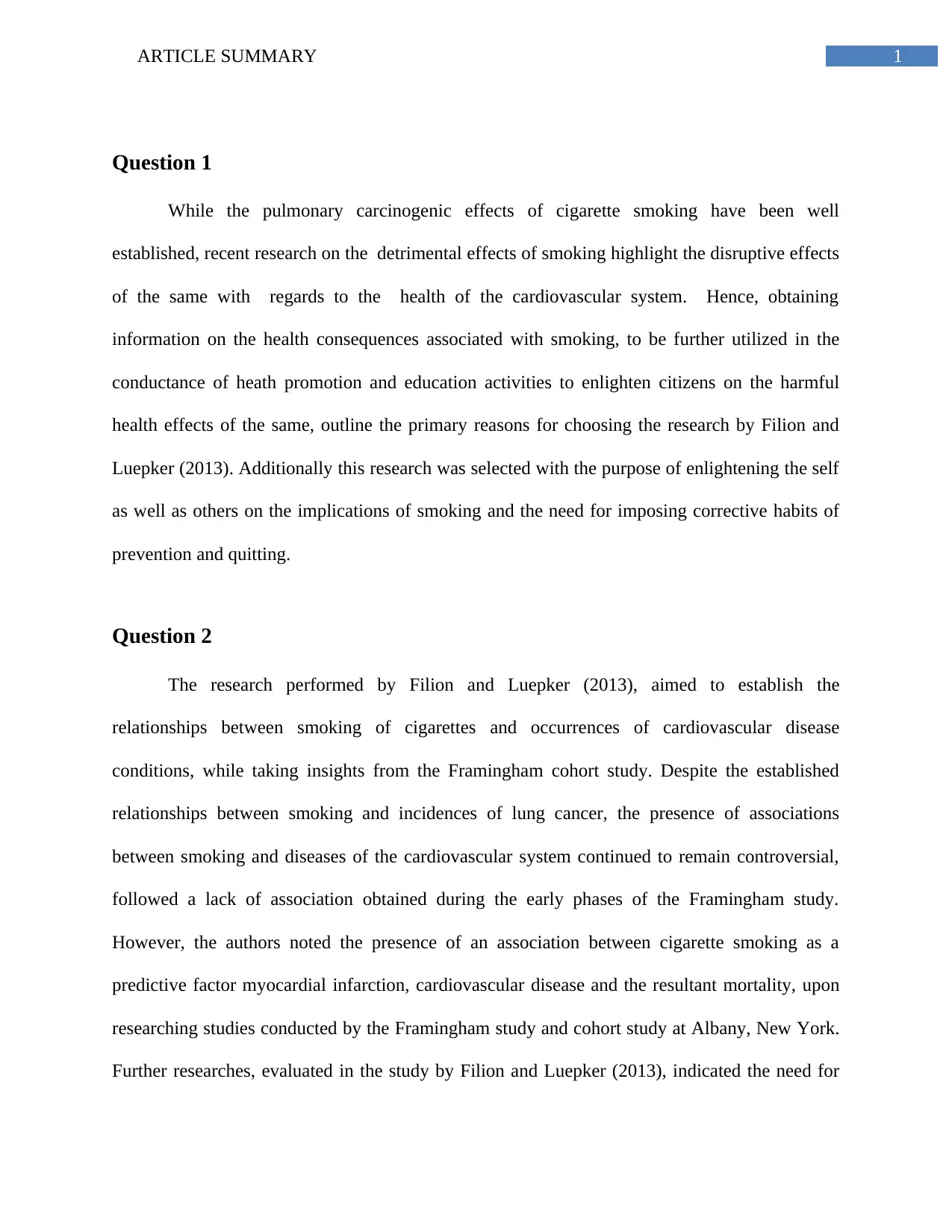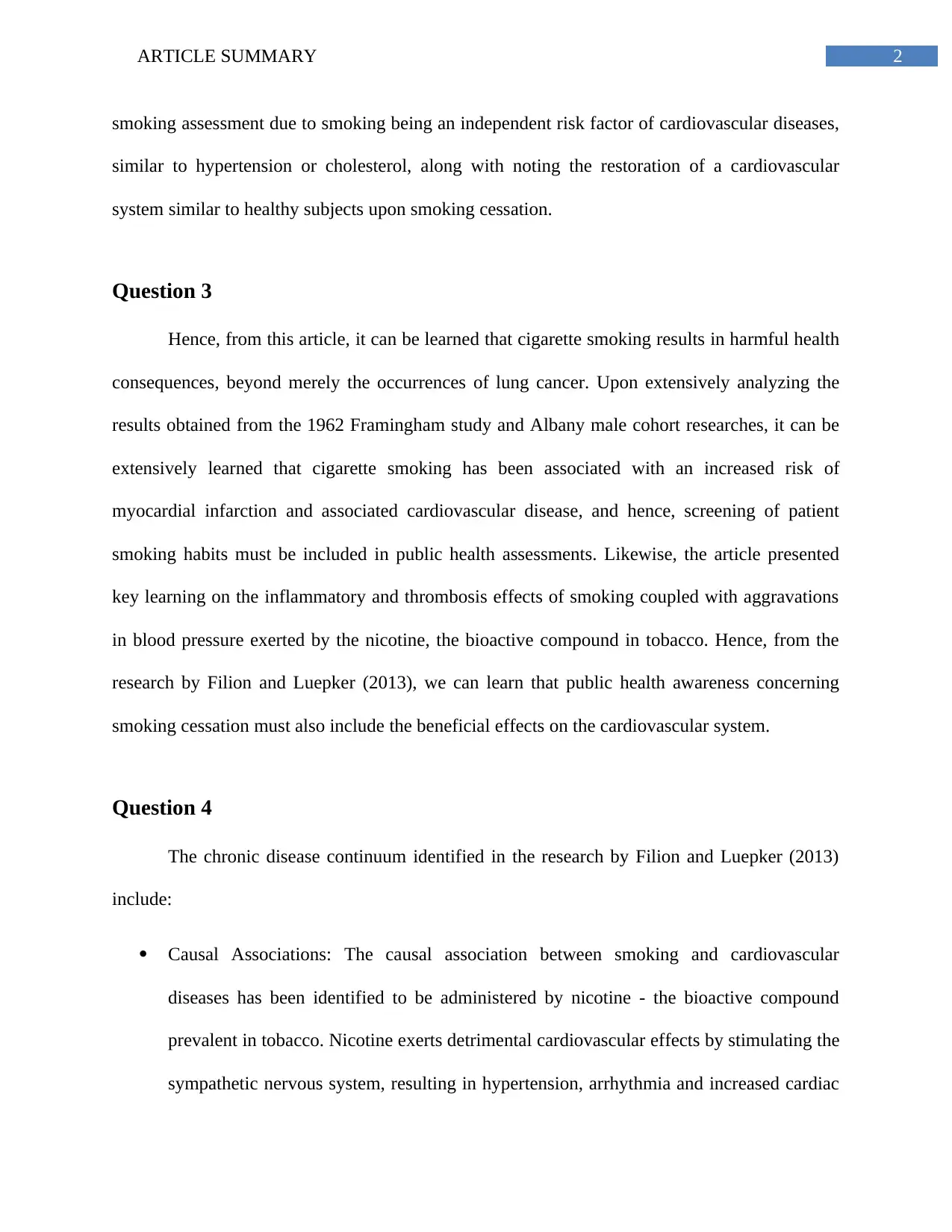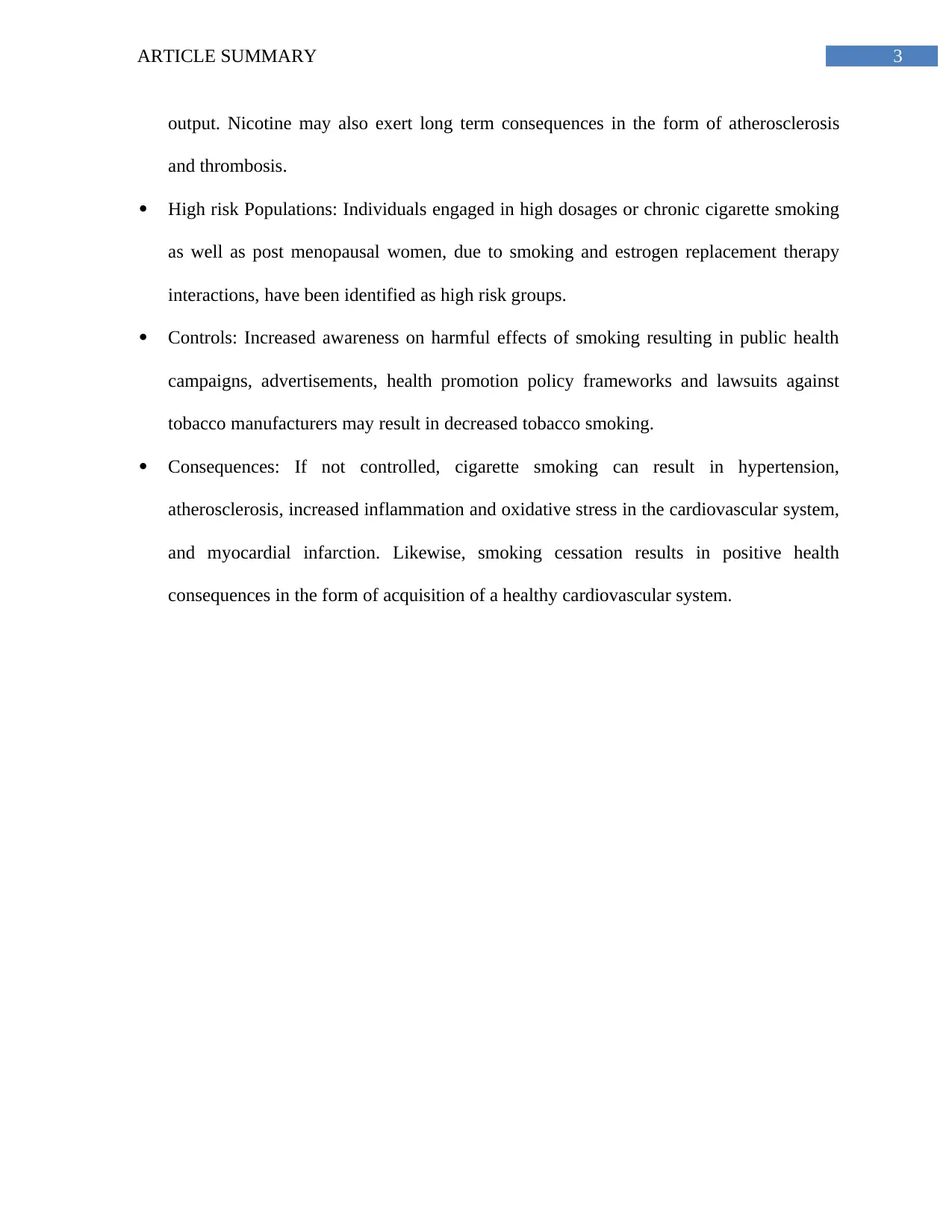Article Summary: Cardiovascular Impact of Smoking - Framingham Study
VerifiedAdded on 2023/04/21
|5
|732
|456
Essay
AI Summary
This essay summarizes the research article by Filion and Luepker (2013) which explores the relationship between cigarette smoking and cardiovascular disease, drawing insights from the Framingham cohort study. While the link between smoking and lung cancer is well-established, this research focuses on the often-debated connection between smoking and cardiovascular health. The summary highlights the key findings of the study, including the association of smoking with an increased risk of myocardial infarction and cardiovascular disease, emphasizing the need for smoking assessments in public health. It also discusses the inflammatory and thrombosis effects of smoking, as well as the impact of nicotine on blood pressure. The essay further identifies causal associations, high-risk populations, potential controls, and consequences related to smoking and cardiovascular health, advocating for increased public health awareness regarding the cardiovascular benefits of smoking cessation. Desklib provides access to similar solved assignments and study resources for students.
1 out of 5






![[object Object]](/_next/static/media/star-bottom.7253800d.svg)